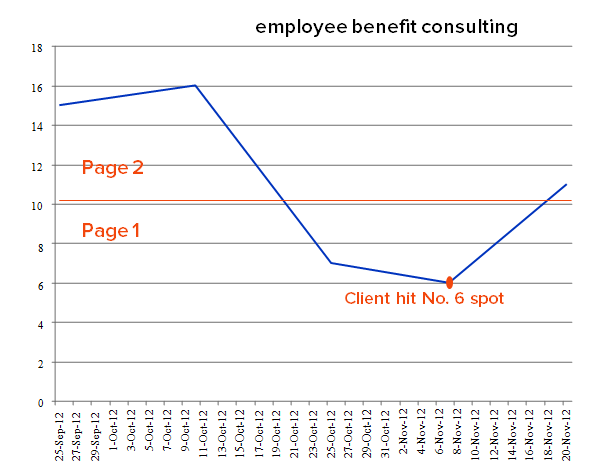If you know the world of content marketing at all, you’ve likely heard the argument that quality trumps quantity on the web. While I’m not here to argue that high volumes of low-grade media will allow you to outpace competitors publishing fewer articles than your company, I disagree with the idea that a consistent array of high-quality content is inherently spammy or not worth your while. In fact, I would argue that the more engaging content you can publish to your website and social accounts, the better for both you and your customers. More content means more opportunities to educate, while also giving you the chance to build internal and external links.
Overall trust in search engine media is on the rise, and internet users now feel confident in brands’ abilities to publish credible content to the web. Brafton recently reported on Edelman figures that show trust for media channels increased 5 percent year-over-year and, across every age bracket, people now put comparable faith in SEO content and traditional media. Broadcasters don’t stop running shows during prime time hours because their daytime talk shows generate a lot of buzz, and web publishers shouldn’t cease content publication after a few popular stories. One of my clients offers a case for why you need consistent updates – especially during seasons with peak search activity for your offerings.
What happens when you cut content production in half?
A client of mine operates within the health insurance industry – people want reliable information when it comes to healthcare. More, in any industry, on-page trust factors are important for continued keyword progression and organic traffic upticks. There’s no room for producing shallow content. In our working relationship, we established that the company should publish a certain volume of custom content each month to reach predetermined goals. Ultimately, they were adding about two fresh stories to their website each day. The business made significant strides and climbed in search results month-over-month. However, the company decided to cut its content production efforts in half during October 2012 – they were happy with the articles, but wanted to divert some effort to another web property. This month marked when “Obamacare fines” went into effect, and political healthcare debates were in full swing. While many competitors doubled down on their own content efforts to enter these discussions online, my client’s compromised content strategy sputtered and its rankings began to fall because of the volume of quality media being produced by other industry experts. Instead of noting my client’s exceptional keyword progression, I had to broach the topic of keyword REgression and why consistent branded content could have made all of the difference.
The strategy and the success
My client’s content marketing strategy focused around the core term “employee benefits consulting.” This phrase and similar variations brought the company a lot of high-value organic traffic, and we tailored our content production efforts around the brand’s business model to position it as a leader in the field. When we were producing multiple posts for my client each day, the company climbed from No. 17 in SERPs to No. 9, delivering larger volumes of quality traffic during a competitive season. Instead of being way down on the second page on Google, my client broke through and found itself on page one.
 However, maintaining search visibility and organic traffic requires a company to publish fresh web content consistently, and my client chose to minimize production efforts. In the following month after the company stopped posting several times a day, my client’s website fell off of page one results for “employee benefits consulting.” In the wake of search volumes skyrocketing around these keywords as a result of Obamacare, it was the equivalent of my client not having his new toy rank around Christmastime.
However, maintaining search visibility and organic traffic requires a company to publish fresh web content consistently, and my client chose to minimize production efforts. In the following month after the company stopped posting several times a day, my client’s website fell off of page one results for “employee benefits consulting.” In the wake of search volumes skyrocketing around these keywords as a result of Obamacare, it was the equivalent of my client not having his new toy rank around Christmastime.
While falling out of view on one key phrase can drastically minimize organic search traffic, dropping in two key areas can spark a snowball effect and put a company in rough financial waters. Publishing daily pieces that used the key phrase “employee benefit consulting,” (singular) helped the site win more organic traffic and moved it up to rank at No. 6. The company fell to No. 11 when it cut digital content production. The archive of content around the phrase fueled some sustainable improvement from where the client started, but it still didn’t stay on page one.
What does this mean?
I understand that publishing “quantities” of content can seem unnecessary, especially if you post low-grade material. But when you work with a content marketing agency that understands your business model and its goals, you have the opportunity to publish consistently high-quality articles to your website, and this action helps you improve visibility on core phrases and allows you to maintain qualified traffic and brand lift, not drop out of view.
73 percent of entrepreneurs expect to see blog updates from brands they connect with online.
Content marketing isn’t a one-and-done practice – you have to stick with it or else you won’t see any benefits from your investments. Brafton reported on BizLaunch data that found 73 percent of entrepreneurs expect to see blog updates from brands they connect with online. Consumers also turn to the web for the latest news and events, with Millennials choosing the internet over traditional media more often than ever before. What does this mean for the average B2C or B2B company? You can have both quality and quantity at once – in fact, your customers want you to become more engaged and communicative every day.
I’m not saying invest in content marketing quantity over quality, but you’re making a grave mistake if you don’t understand that you need consistency – especially in seasons when the stakes are high – to remain in front of your customers online. A solid editorial brief and creative strategy positions you to find good, sustainable ideas and regularly cover topics your audience will care about. Directing readers from topical articles to your most relevant pages will help overall SEO – and deliver engagement that matters. As Brafton’s Editor-in-Chief Richard Pattinson said in a recent blog post, “Pieces must be aligned to support an extended and intuitive user experience. Too often online, links on the page provide only tenuous, surface-level connections to the work in hand.”
The more you can publish quality media, the more valuable your site becomes to both consumers and search engines.


